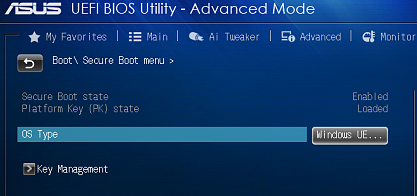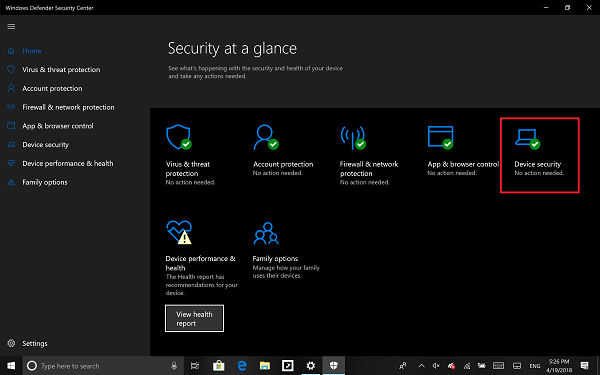
- Is it safe to disable secure boot windows 10 how to#
- Is it safe to disable secure boot windows 10 install#
- Is it safe to disable secure boot windows 10 drivers#
- Is it safe to disable secure boot windows 10 full#
- Is it safe to disable secure boot windows 10 windows 10#
The way you enable and disable Secure Boot varies by PC and motherboard manufacturer. Under Secure boot, look to see if it Secure boot is on or Secure boot is off. To check if secure boot is enabled or disabled in Windows Security, go to open Windows Security, and click on the Device security icon.
Is it safe to disable secure boot windows 10 windows 10#
Check If Secure Boot is Enabled or Disabled in Your Windows 10
Is it safe to disable secure boot windows 10 how to#
In this post, you will learn how to check if your PC is supported with Secure Boot, and how to temporarily disable Secure Boot on HP, ASUS, Dell, Acer laptop, XiaoMi. This tutorial will show you how to disable Secure Boot temporarily in Windows 10. However, many times you will need to disable Secure Boot in Windows 10 due to some hardware misconfiguration. Secure Boot is a security feature of UEFI in Windows, which makes sure that your PC boots using only software that is trusted by the PC manufacturer.
Is it safe to disable secure boot windows 10 full#
Will Microsoft really continue signing these Linux loaders and allowing them to function in Secure Boot mode in the future, or will they eventually stop doing that, too? If “for security reasons” is a good enough reason to block Linux from installing on a Windows RT device or Windows 10 phone, perhaps that logic will be extended to full Windows PCs in the future.How to Disable Secure Boot Temporarily in UEFI in Windows 10 Want to stay up to date on Linux, BSD, Chrome OS, and the rest of the World Beyond Windows? Bookmark the World Beyond Windows column page or follow our RSS feed.Įven so, it’s impossible to peer into the future at this point. Perhaps so many of the kinks have been worked out that Microsoft can now start tightening the Secure Boot screws without locking out Linux at all. The rise of mandatory, locked Secure Boot could create a problem for smaller Linux distributions or custom Linux systems-but the Linux Foundation Secure Boot System is a generic loader signed by Microsoft that should allow any Linux system to boot on PCs with Secure Boot enabled. There is no way to get your hands on a PC that doesn’t require proprietary firmware beyond having a boutique manufacturer like Purism build it.

And every single hardware maker chose to lock it up tight until the free- and open-obsessed Purism recently realized that manufacturers could choose to disable the feature. The firmware-checking feature in Intel processors allows manufacturers to choose whether or not to lock CPUs down to run manufacturer-provided firmware alone. In practice, this will probably end up harder than it looks, as one recent example drives home.
Is it safe to disable secure boot windows 10 install#
And, if you want the ability to disable Secure Boot and install whatever operating system you want, you can just buy a PC with such a toggle.

If someone gets their hands on your PC, they can’t boot into UEFI and disable or try to install their key. Theoretically, this provides some choice-you can choose to buy a computer without a toggle in the UEFI firmware, locking it to only boot Windows and other approved OSes. In other words, it’s up to every manufacturer to include the toggle or not. That’s the information that Ars Technica noticed in a slide presented at Microsoft’s WinHEC conference. On a PC, Microsoft allows manufacturers to choose whether or not a user can disable Secure Boot. Windows 10 makes the user-configuration toggle optional. Or you could tweak Secure Boot and only allow operating systems signed with your own personal signing key to boot. So you could always disable Secure Boot and still install any Linux distribution you liked.

As part of the certification process that allowed manufacturers to pre-install Windows and put little Windows logos on new PCs, Microsoft forced hardware makers to give users a way to disable Secure Boot and add their own signing keys on Windows 8 PCs. The Linux community was understandably up in arms about this, and Microsoft tossed it a bone. And, in fact, on Windows RT devices like the original Surface and Surface 2, Secure Boot was locked down tight to only allow Windows RT to boot. This prevents low-level malware like rootkits from interfering with the boot process.īut the same feature that blocks rootkits will also block other software, like Linux boot loaders. On Windows PCs, the UEFI Secure Boot feature generally checks to see if the low level software is signed by Microsoft or the computer’s manufacturer.

Is it safe to disable secure boot windows 10 drivers#
When you boot a new Windows 8 PC, the Secure Boot feature in the UEFI firmware checks the operating system loader and its drivers to ensure they’re signed by an approved digital signature.


 0 kommentar(er)
0 kommentar(er)
